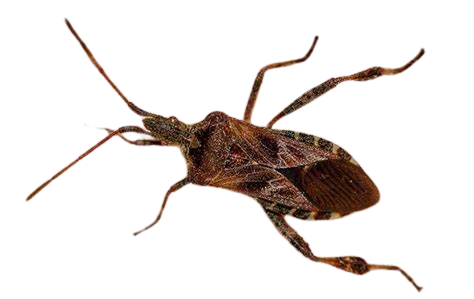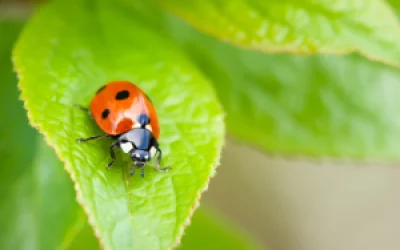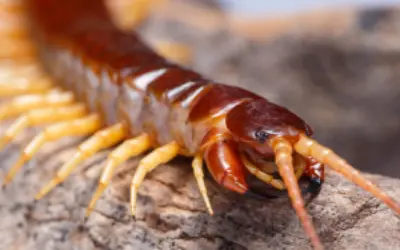Occasional Invader Pest Control in Vancouver
Keep Out Unwanted Creepy Crawlers – Fast, Targeted Solutions

Some pests don’t live in your home year-round—but when they do show up, they’re annoying, creepy, and often hard to get rid of. These are called occasional invaders, and at 1st Pest Control, we know exactly how to handle them. Whether you’re dealing with a sudden appearance of silverfish, earwigs, centipedes, pill bugs, or cluster flies, we’ll identify the source and provide long-lasting relief.
At 1st Pest Control we specialize in pest and wildlife remediation. Occasional invaders such as fruit flies are prevalent throughout single family homes, multi-family buildings and commercial properties in the Lower Mainland. With industry-leading techniques and pest control methods, you can feel secure that your home or business is being treated to the highest industry and safety standards by our Certified Pest Control Technicians.
By combining both environmentally-friendly pest control services and an Integrated Pest Management (IPM) approach, we will create a specialized treatment program tailored to your specific location and infestation. Our mission is to eradicate pests in your home or business to give you peace of mind and to ensure the safety of you and those you care about.
What Are Occasional Invaders?

The phrase “occasional invaders” refers to a catch-all grouping for pests that infiltrate houses from time to time for no apparent reason other than the fact that the external weather conditions become hostile to the bugs’ ability to survive.
These pests that typically live outdoors but enter homes or businesses when environmental conditions change—like in spring, fall, or during rainy spells. Most are harmless to humans, but they can still cause damage, trigger allergies, or simply be unsettling to find inside.
Fruit flies and house flies sowbugs, pillbugs, centipedes, millipedes, moths, ladybugs, and other garden beetle varieties. Boxelder bugs, crickets, earwigs, ladybugs, scorpions, Slugs, springtails, stink bugs are only some of the occasional invaders.
How Do Occasional Invaders Get Inside?
These pests usually enter your home through:
- Cracks in the foundation or walls
- Gaps around doors and windows
- Vents, utility lines, or poorly sealed pipes
- Basements and crawl spaces
- Attic vents and under roof shingles


New to 1st Pest Control?
Enjoy 10% OFF your first treatment service.
Enter Code NEW10 in the contact form

Ready to Rid Your Home of Pests? Contact 1st Pest Control Now for Expert Treatments.
Say Goodbye to Uninvited Guests
FAQs - Occasional Invaders
What do they look like?
✅ Fruit flies and house flies are among the most common pests under the “occasional invaders” As their name indicates, occasional invaders are a category of insects that appear in an indoor setting every once in a while. These insects include but are not limited to, sowbugs, pillbugs, centipedes, millipedes, moths, ladybugs and other garden beetle varieties. Flies appear more often indoors than other occasional invaders and are easily noticeable due to their high level of activity.
✅ Sowbugs and pillbugs are dark grey and measure around 1/4 to 3/4 of an inch in length. Sowbugs have a wider, more oval body shape with a skirt extending around the shell. Sowbugs feature a posterior two-part appendage that is not present in a pillbug. Pillbugs are more elongated and have the ability to roll into a ball.
✅ Millipedes and centipedes are reddish-brown to black in color. They vary notably in size, depending on species, but are generally observed to be a couple of inches or less in length. Millipedes have a thicker body with shorter antennae and two pairs of legs per body segment. In contrast, centipedes have a thinner body, longer antennae and one pair of elongated legs per body segment.
✅ Garden beetles and moths comprise a variety of species, such as ladybugs, ground beetles, European chafer beetles and gypsy moths, whereas flies comprise of house flies, mosquitoes, midges and numerous other species. Altogether, these insects range in color and patterning and while are generally small, do vary in size and shape.
Where do they come from?
Occasional invaders enter a residence through various openings along a building’s perimeter. Their small size allows them to easily move through cracks and crevices in the walls or floors leading from the outside.
Gaps along windows and doors are also typical entry points. Occasional invaders are attracted by shelter or a food source. Moths, in particular, are attracted to artificial light, whereas house flies will seek out potential food sources and breeding locations indoors.
Can fruit flies cause any damage to my home or business?
Occasional invaders are not known to cause significant damage to a home or business. Beetles may feed on indoor plants or uncovered fruits. They may periodically excrete odour and leave stains on surfaces.
Occasional invaders are considered a nuisance that may become more problematic with larger populations.
Can they cause me or my family to become sick?
Occasional invaders generally pose a low to moderate health risk. Centipedes are venomous and along with some beetles, are capable of biting humans. House flies may transmit dysentery, cholera and typhoid fever; mosquitoes, in particular, are associated with some deadly diseases and may present a greater health risk.
Typically, insect bites may cause symptoms such as pain, swelling, and redness, but are rarely severe. General symptoms vary depending on the size and type of insect, and if individuals are allergic to bites. Their presence and activity may also cause allergies to develop over time.


